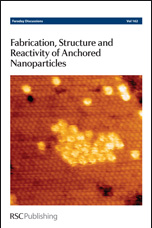Helium droplets are large helium clusters that are capable of picking up individual atoms and molecules and show promise as nano-reactors for the synthesis of unique nanoparticles. In particular, the sequential addition of materials of different types offers opportunities for the fabrication of novel core–shell nanoparticles that cannot be synthesised by other methods. To exploit this potential, here we have carried out a mass spectrometry investigation on metal clusters in order to establish how to control the doping conditions for the fabrication of nanoparticles in superfluid helium droplets, and in particular to develop a recipe to control core and shell ratios in the case of core–shell nanoparticles. Several types of metal nanoparticles, including pure Ag, Au and Ni nanoparticles, and Ag/Au and Ni/Au core–shell systems, have been synthesised and then removed from the helium droplets by deposition on substrates for ex situ investigations using high-resolution transmission electron microscopy (TEM) and X-ray photoelectron spectroscopy (XPS). The TEM imaging has been used to estimate the sizes of nanoparticles, which show a bi-model distribution under the conditions employed. We also present the first evidence that crystalline metal nanoparticles are formed by self-assembly of metal atoms in helium droplets. The XPS investigation of Ni/Au core–shell nanoparticles shows an absence of any Au 4f core-level shift that would occur on alloying of Au and Ni, which provides the first direct evidence for the successful formation of core–shell nanoparticles using superfluid helium droplets.
You have access to this article
 Please wait while we load your content...
Something went wrong. Try again?
Please wait while we load your content...
Something went wrong. Try again?

 Please wait while we load your content...
Please wait while we load your content...